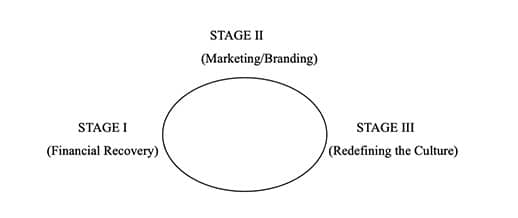The Resilience, Vision and the Faith-driven Turnaround Story at Friends University
Study Scope and Purpose
To understand the important decisions that contributed to the recent financial turnaround and revitalization at Friends University, the institution conducted a year-long study. The purpose of the study was to review the last 10 years of decisions and activities to identify the factors that contributed to a successful financial turnaround and positive spiritual renewal, which led to the reclaiming of the Friends University Christian mission. A hopeful outcome in identifying these key themes was to ensure the future success of the university and provide resources to other institutions as they navigate similar challenges.
During the 2023-2024 academic year, over a period of several months, the Institutional Research staff of Friends University interviewed 13 individuals in mostly separate interview sessions, representing members of the Board of Trustees and faculty and staff, who served the university both prior to the turnaround and during the tenure of President Amy Bragg Carey. These interviews were recorded and evaluated to recognize the common themes and critical decisions that contributed to the successful turnaround and spiritual revitalization. Various documents such as the Revitalization and Growth Plan and strategic planning documents were also evaluated with the same intent.
The Turnaround Story
- Introduction
- The Challenges of Higher Education and Friends University
- Board of Trustees Identifies Negative Trajectory and Acts
- President Immediately Designs the Revitalization and Growth Plan
- President Builds Leadership Team
- Branding and Identity as Christian University
- Athletics to Grow Enrollment and Shift Campus Culture
- Board and Donor Support was Key
- Innovation Fund Provided Momentum
- The Power of We
- Supernatural Component
- Personal Characteristics of the President Contributed to the Turnaround
- To What Extent is the Turnaround Consistent with Dr. Carey’s Dissertation Research
- Postscript from Dr. Amy Bragg Carey
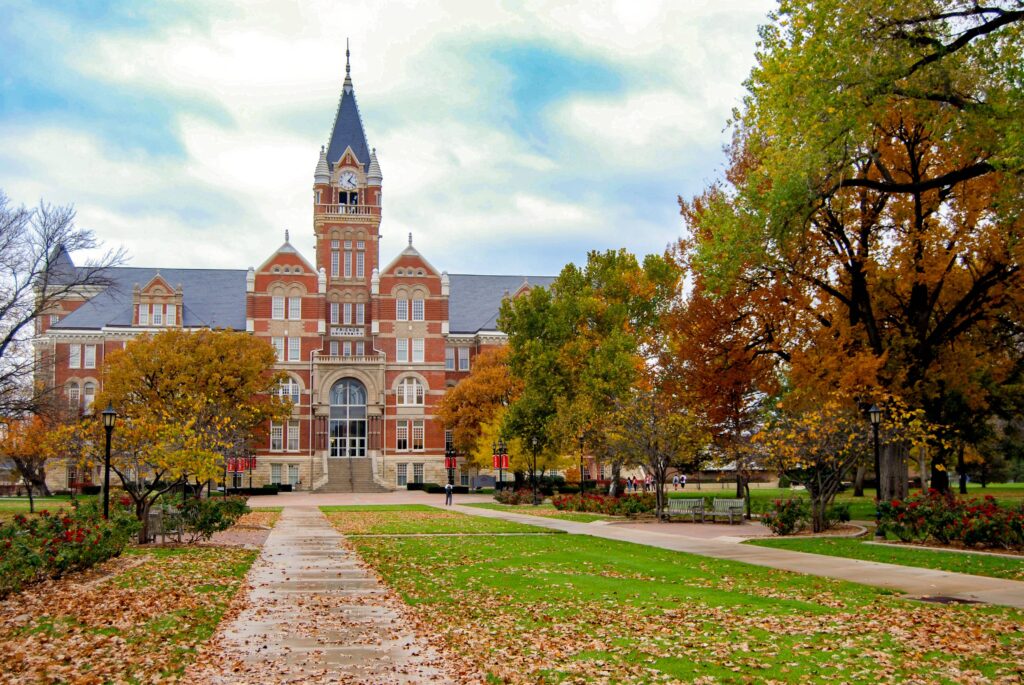
Introduction
Friends University, of Wichita, Kansas, was founded in 1898 after businessman James Davis bought the former Garfield College building and land and gifted it to the Kansas Society of Friends, the Quakers, to fulfill his dream of establishing a Christian, Quaker university in the Midwest. Upon donating the building, Davis stipulated that it should be forever called Friends University and now the institution has been a part of the Wichita skyline for 125 years. Friends University is accredited by the Higher Learning Commission and offers 60 market-demand undergraduate and graduate programs and is soon to debut its first doctoral program in Christian Formation and Soul Care. It is recognized for its excellent Fine Arts Department and Singing Quakers choir. Friends is a national leader in Zoo Science and Christian Spiritual Formation, home of the nationally recognized Apprentice Institute. The university also provides strong business, STEM, and health science programs.
Enrollment has fluctuated through the years with the traditional student enrollment reaching over 900 students a handful of times in recent decades. The institution’s Quaker roots and Christian heritage continues to influence the environment of the campus community and is evidenced in the RISE values – respect, inclusion, service and excellence. Through the years, the faith emphasis of Friends has come in and out of focus, but in 2015, the Board of Trustees united over a goal to be a distinctly Christian university once again, which led to a new mission statement and the hiring of current president, Dr. Amy Bragg Carey.
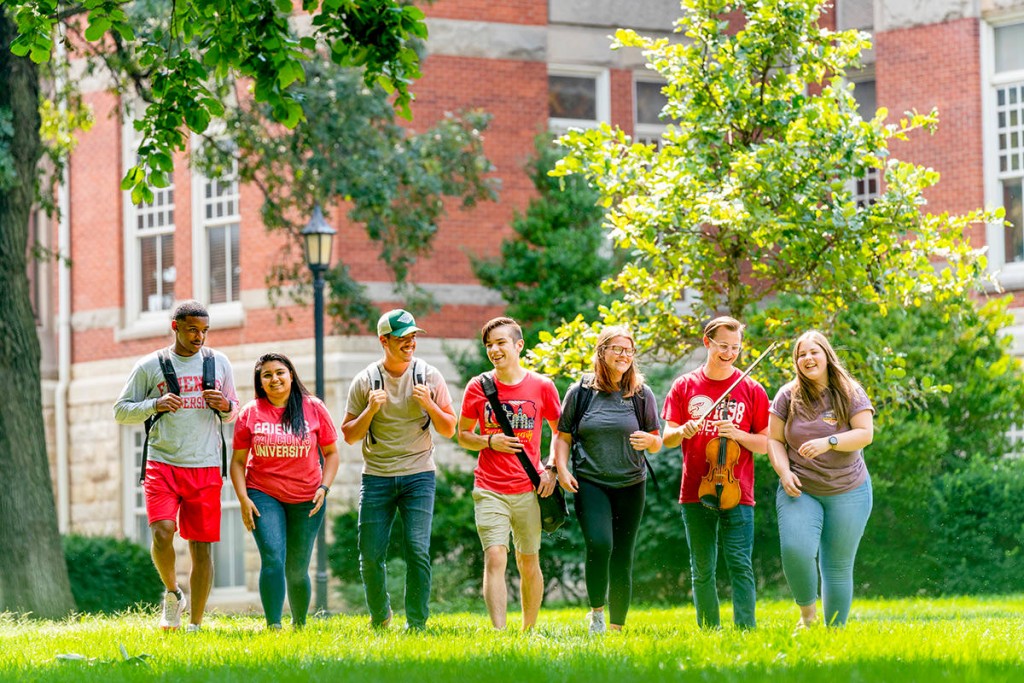
The Challenges of Higher Education and Friends University
The news media, leaders on both sides of the political aisle, and now students and parents are questioning the value of higher education. Is a college education worth the significant cost? For more than a decade the adult education market provided significant revenue for small private institutions, but the once flush market dried up with fewer businesses paying the tuition, and large, low-cost, national, online providers taking most of the market share. Cost cutting and budget tightening is common for higher education institutions, as public and private colleges are trying to provide the same level quality of education with fewer dollars, especially in an environment of high inflation. Additionally, many in the public square have raised questions regarding the high cost of education, increasing student loan debt, and the looming demographic cliff. The Inside Higher Ed publication, which provides daily news updates related to higher education, recently noted that universities are closing or merging at the rate of one per week. In just the last year, the risk of closure has ramped up considerably. Therefore, many more institutions will be at the brink of closure or will require a turnaround to survive.
While some of these challenges are new concerns that have surfaced in the last few years, Friends University walked through many of these same obstacles 14 years ago. From 1991-2011, Friends University thrived under the leadership of president, Dr. Biff Green. During his tenure, there were incremental increases in the traditional student population as the demographics for traditional-age students grew. The university built up reserves, increased endowment, and improved facilities. Throughout those twenty years, Friends University was known to be an institution that cared for students, hosted small class sizes, fostered a good community feel among students, faculty and staff, maintained a beautiful campus, and offered a quality academic experience with an exceptional Fine Arts program. Friends was also known as an early adopter of the adult education model, capitalizing on the market when companies such as Boeing were providing tuition assistance. At the program’s height, university enrollment was two-thirds adult student population and one-third traditional-age students, with significant revenue coming from the adult programs. This trend began to shift in the adult market at the close of Dr. Green’s tenure. Between 2005 and 2012, Boeing began moving out of the Wichita market, taking many of the employees with them. As a result, there was a decline in adult students and a waning hope in the future of adult programs. Additionally, other big online providers were taking market share.
In the 4 years between Dr. Green’s retirement and Dr. Carey’s arrival, the university took a negative turn and things declined rapidly. Those who were interviewed for the 2023-2024 study considered this a time of “chaos;” one when “the wheels came off.” They identified issues that included significant operating budget losses, unrealistic budget forecasts and enrollment decline in both the adult market and the traditional programs. In addition to the financial difficulties, there was a serious Christian mission drift, poor morale and fear among faculty and staff, leadership issues and a new president that did not align with the values and goals of the Board of Trustees. That president was very short-term, lasting just 2 ½ years. He was followed by an interim president of 18 months. As one interviewee described it, the university went from a steady, smooth organization to chaos. The faculty were in disarray due to a high level of concern, fear for the future and the departure of senior leadership was unsettling, and it felt like “a bomb went off.”
The institution quickly recognized a need to take drastic measures to re-engage the mission, attract new students and restore financial stability. This paper is intended to identify the themes, actions and activities pursued by the board, faculty and staff as a part of the turnaround of Friends University.
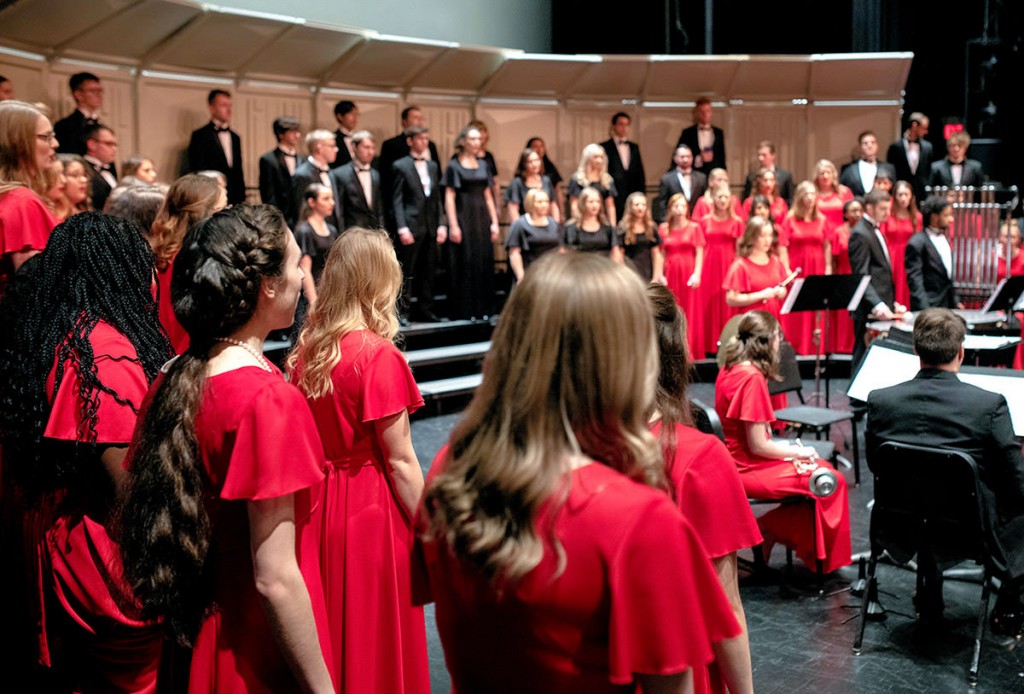
Board of Trustees Identifies Negative Trajectory and Acts
It wasn’t long into the short tenure of the 13th president that the Board of Trustees recognized the president’s lack of interest in the university’s long-standing Christian mission and failure to lead the faculty and staff well. Additionally, financial reserves were being quickly depleted and broad sweeping changes had not yielded positive results. Interviewees described several “poor leadership” decisions that led to decline. For decades, Friends offered religion classes, established an institute of Christian Spiritual Formation, held weekly chapel services and supported an office of Campus Ministry. Christian values were a vibrant part of the campus DNA, yet the new president demonstrated a clear distaste for the mission and moved the weekly worship service off campus. One interviewee felt as though these actions “systematically kicked Jesus off the campus.” Many felt the university had become hostile to the Gospel.
After the president was removed from his position, the institution’s Christian mission became a lengthy topic at Board meetings. Ultimately the Board of Trustees decided that they would “live or die as a Christian university.” Collectively, under the strong leadership of the Board Chair, Dr. John Lewis, the Board decided that they would prefer to be a Christian university of Quaker heritage rather than a liberal arts university with a Quaker heritage. The Board indicated that reclaiming the mission was of utmost importance; the college would not keep drifting missionally. The Board developed a new mission statement that would identify the clear Christian focus along with forming students in their academic, spiritual, and professional lives. The Board of Trustees unanimously affirmed the new mission statement and determined to set a new course, put a stake in the ground to be a distinctly Christian university, and find a president willing to lead a spiritual revitalization in addition to a financial turnaround. Dr. Amy Bragg Carey, identified as one who could achieve those goals for the university, was hired in 2015 and began in July of that year. The bold and courageous leadership of the Board was the first critical step toward a new vision and turnaround plan for the university. Once the negative trajectory was recognized, it was imperative that the Board moved into action swiftly. Board Chair John Lewis stated that he “didn’t know what we were going to do (to turn the university around) but we were called to God’s faithfulness.”
In summary, to prepare for a turnaround of Friends University, the Board: 1) recognized mission drift and performance issues with the current president and made a change, 2) reclaimed the Christian mission of the university and 3) laid out a strategy to recruit a new president ready to take on the turnaround and lead a spiritual revitalization.
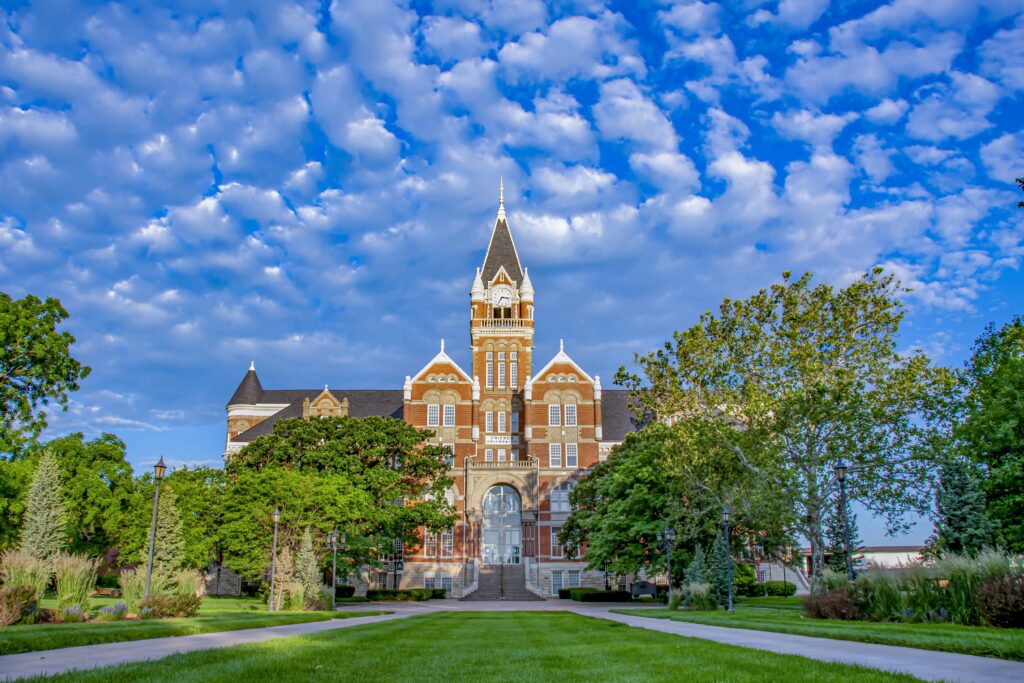
President Immediately Designs the Revitalization and Growth Plan
When Dr. Carey arrived at Friends University, the budget deficits from the previous 5 years totaled $6 million. With these deficits and large purchases made by the short-term president, that meant the cash reserves had been depleted from $14 million to just $3.4 million. The 2015-2016 budget set by the interim president and her team was set to be a loss of more than $5 million. Clearly, preserving cash and reducing the deficit was a top priority. Many of the key leadership positions in the president’s cabinet and administration were interim leaders. Enrollment was dropping.
A Dickeson Prioritization model was in process, but clear communication and steps to final decision making regarding the prioritization plan was lacking. Solutions to these various issues were needed and time was of the essence. Thus, the Revitalization and Growth Plan was developed with Dr. Carey’s Cabinet and a few faculty members. It was primarily a tactical plan designed to reduce costs, grow programs that had market demand and interest, increase enrollment and retention, and obtain cash by selling property and seeking donations. By the end of the first year the planned deficit was cut by nearly $4 million to approximately $1 million operating deficit. Dr. Carey had determined that it would take three years to get to a balanced operating budget, and shared that timeline with the Board, so this was good progress. Some of the early actions of the Revitalization and Growth Plan included reduction of faculty and staff positions, reduction of budget line items, starting a Cyber Security program, adding sport teams such as Cheer and Women’s Golf. Other efforts include utilizing data and marketing analysis for decision making and bringing back the Institutional Research position, refinancing debt, selling 2 buildings (one which sat vacant), and increasing philanthropic support. For Friends University to be successful, the core business, the home campus had to be successful, it had to win. Therefore, there was an intentional effort to reduce and eliminate activities that were diverting attention from the core work. Extension sites in Topeka and other areas that once had traction but were failing needed to be discontinued.
Tough decisions were made to focus on the academic programs that were strong and had potential for growth and sunset those that had languished for years. Funds and faculty positions we reallocated from programs that had been discontinued to areas of opportunity such as Cyber Security, business and health sciences.
The president understood that Friends University had to create a winning, can-do, culture by developing high-impact teams focused on good strategy and promoting the Friends value proposition with positivity and energy. Prior to the turnaround the faculty and staff were in a posture of waiting for more bad news. Early wins and donor gifts helped to turn around the culture toward growth and success. Eventually, little successes translated into dynamic campus teams that have gained national recognition in academic and sports, and achieved national accreditations.
As a result of these efforts, Friends University has achieved a balanced budget every year since 2019 by increasing traditional enrollment, increasing student housing from approximately 300 to 450, reducing debt from $12 million to under $2 million and increasing the endowment by $20 million. In summary, a tactical plan was developed with action steps to right the ship financially, spur on enrollment growth with market demand programs and new sport teams and increase housing revenue. The tactical plan was just the beginning of creating a culture of success and further development of robust strategic planning.
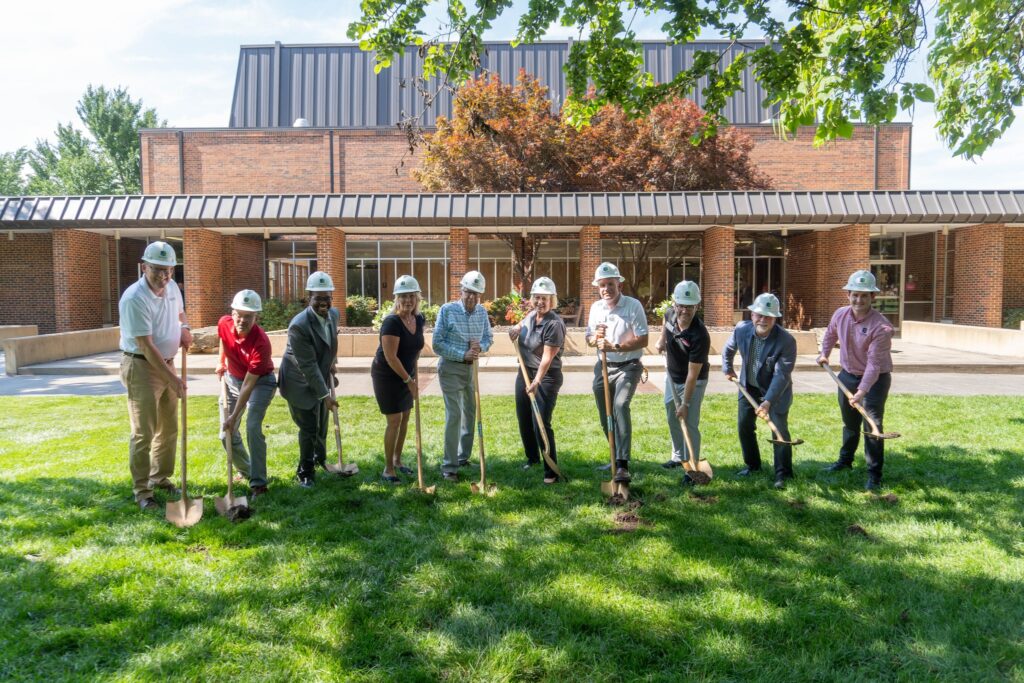
President Builds Leadership Team
While the Revitalization and Growth Plan was being developed and implemented, President Carey began the process of hiring cabinet and faculty leaders. When the Interim Vice President of Academic Affairs (VPAA) left for a new position the day Dr. Carey arrived on campus, it was evident that the VPAA was the most pressing role to fill. Within a month, a seasoned academic leader, Dr. Jasper Lesage, came to Friends and provided significant stability and direction for the faculty and the division of academic affairs. He was credited by many interviewed for his calm, steady approach, expertise with Higher Learning Commission (HLC) accreditation, and experience in academic leadership. The university was out of compliance with the accrediting body when Dr. Lesage arrived so his expertise in this area was especially important. Soon other skilled, mission-fit leaders joined the Cabinet team who were aligned with the goal to revitalize the Christian mission and orchestrate a financial turnaround. This new leadership team was forced to make many tough but necessary decisions. The president was diligent in hiring others who were interested in fulfilling the charge set out by the Board and willing to take a risk in leading the revitalization. In summary, turnarounds require a team of good-hearted, risk-taking leaders determined to make tough decisions.
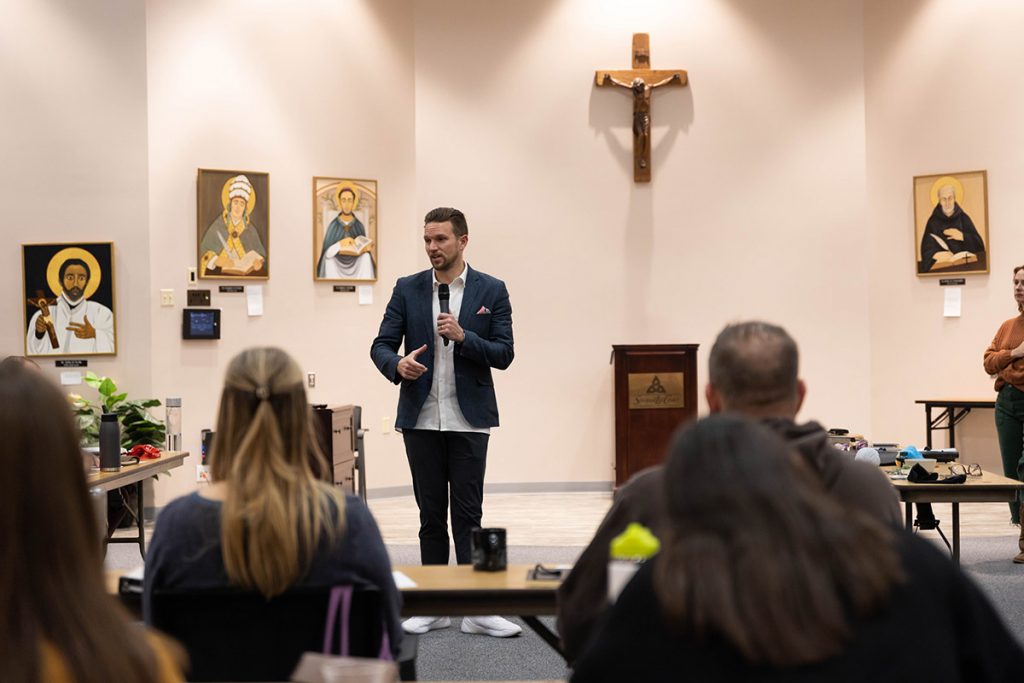
Branding and Identity as Christian University
With the stake of missional fidelity firmly planted by the Board of Trustees, the president, campus ministry leaders, Christian Spiritual Formation professor Dr. Jim Smith and others brought back key activities and elements of a Christian university. There were missional identifiers such as membership in the Council for Christian Colleges and Universities (CCCU) which provided a way to promote faculty job openings and align with other Christian institutions. However, this move was not initially viewed as favorable by the faculty, in fact 60% of the faculty at the time voted against the membership. Nevertheless, it was a clear identifier of the new direction for the university. Dr. Guy Chmieleski was hired as Campus Pastor and Dean of Campus Ministry in 2016 and his leadership provided the momentum for the Christian mission to be integrated at Friends through campus ministry programming. Some of the faith formation elements included the return of weekly Chapel (which is a probably a story unto its own), new student Spiritual Life Assistants in the residence halls, a vibrant campus ministry lounge with lots of coffee, the implementation of prayer and devotions at most meetings, and a vibrant Apprentice Institute in Christian Spiritual Formation.
A re-awakening of the religion department also took place with a thriving Masters of Christian Spiritual Formation developed to complement the undergraduate degree. Eventually a doctorate in Christian and Formation and Soul Care was created; Friends University’s first doctoral program. Within the first two years, Dr. Carey, with the assistance of the marketing department, established the RISE values – respect, inclusion, service and excellence. The RISE values were mentioned often by interviewees as a positive culture builder and way to bring clarity to the uniqueness of the long-standing values of Friends University.
One interviewee noted Dr. Carey’s intentionality in hiring in those early years as she interviewed every top candidate for positions at a variety of levels to ensure they understood the mission/vision of the university set out by the Board of Trustees. Some faculty and staff decided to leave because they didn’t connect with the values of the university and others retired in the normal course of time. This turnover in faculty opened opportunities to hire faculty members who were willing to uphold the mission and Christian culture at Friends.
It was stated that probably the most important aspect of the spiritual renewal was that it was an “evolution and not a revolution.” He felt that a revolution, an immediate, top-down implementation of all things Christian by the president in concert with the Board of Trustees, would have likely “blown the place up” and might have led to distrust and departures of faculty and staff members. Instead in the president’s evolution, Dr. Carey took time to get to know people, implemented incremental actions and by understanding the ethos and history of Friends University, allowed people time to evaluate if Friends was the right fit for them. In 2015, Friends was in a fragile state and sweeping dictatorial changes could have been disastrous. It was stated that “playing the long game” was the right approach.
Consistency and clarity were mentioned as themes by those interviewed. The consistency of messaging from the president, cabinet and board, and clarity in direction and identity as a Christian university provided momentum. The “confused identity” was no longer confusing and those that were not in agreement selected out of the university. It took years for momentum to spark in this mission-reclaiming effort; it was most often a process that unfolded one step at a time as the leadership team evaluated which faith traditions to bring back and which new ministry initiatives to establish. In summary, playing the long game of evolutionary steps, consistency in hiring, in messaging, new programs in Christian ministry, and new Christian activities helped to revitalize the Friends identity such that it provided momentum in recruiting students and achieving the turnaround goals.
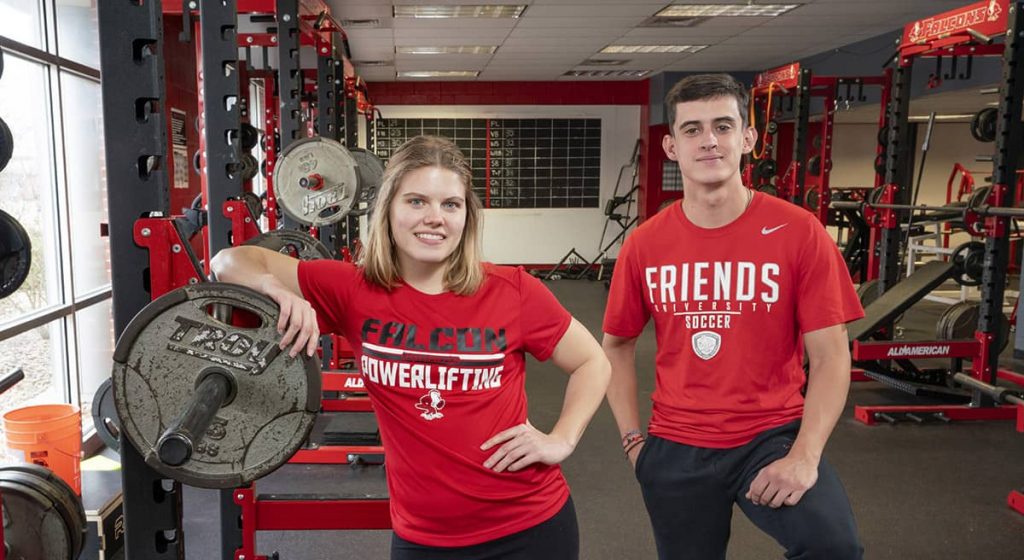
Athletics to Grow Enrollment and Shift Campus Culture
President Carey realized that cutting and reducing budgets as the primary strategy would not achieve success. Instead, additional revenue by growing the number of students would be necessary. Consistent with a strategy in Dr. Carey’s dissertation research, the university set out to add sports teams to grow enrollment. In Dr. Carey’s third year of her presidency, Dr. Rob Ramseyer was hired as Athletic Director, and he was the right person to lead the growth of new teams and additions to rosters, as well as shift the culture in the athletic department. Rob developed goals and plans to increase the number of students and it worked. Along with the student increase came an increase in housing numbers, both of which positively contributed to the operating revenue. Even though there was new momentum and near widespread excitement around these changes and increases, there were moments of difficulty as the coaches sought to reaffirm the Christian mission and integrate the mission in athletics. Dr. Ramseyer set out to mold the athletic culture into one that prioritized gratitude, respect and integrity. Dr. Ramseyer sought new initiatives to shift culture, inviting Fellowship of Christian Athletes on campus to engage in faith activities with students and coaches. Wholly supportive of the Christian mission, He established a holistic coaching model that sought to develop an athlete’s mind and heart as well as their body, focusing on confidence, goal setting, self-awareness, and emotional intelligence in addition to athletic ability. Friends University has grown from 448 student athletes in 2015 to 680 student athletes in 2024.
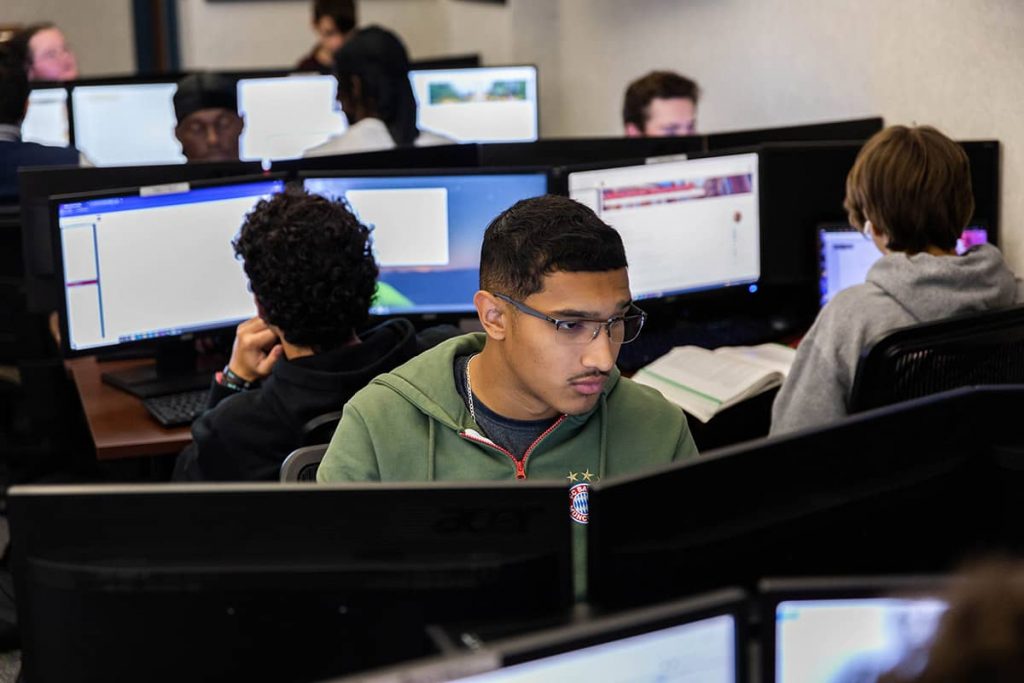
Board and Donor Support was Key
To be successful in a turnaround and spiritual revitalization requires financial and moral support from the Board of Trustees. In reflecting on the early years of missional renewal, one interviewee mentioned that the Board and Dr. Carey provided the strength and confidence necessary for the university to move forward. Another individual noted that the president took “many hits,” for not everyone liked the tough decisions that had to be made. A faculty member felt that the Board gave the president the “right amount of liberty and strength.” A Board member reflected that there was no space in between the president and the board chair; they worked in tandem to quickly and thoughtfully solve early challenges. These interview responses reiterate that, without a doubt, the turnaround would not have been successful without the backing of the Board of Trustees.
Fundraising and donor support were often mentioned as critical to Friends University’s turnaround success. The president needed to demonstrate the ability to raise funds to make up for financial losses and lack of resources, and she did. The university had limited success in fundraising for at least 5 years prior to Dr. Carey’s arrival and there was no established Annual Fund program. The list of donors giving to Friends was much smaller than institutions of similar size. Fundraising would not be easy. However, successful fundraising campaigns and big financial gifts provided early wins for the university. The first ever endowed chairs for the institution were established within the first few years of Dr. Carey’s arrival. Through these efforts, facilities were renovated and updated to encourage population growth, multiple capital campaigns were completed and achieved targeted goals, and gifts to support scholarships demonstrated community support for students. These were encouraging cues to the faculty and staff of the renewing strength and support for the university. Donors that stepped up did so in appreciation of the return to the Christian mission and these gifts fueled the turnaround and growth. Members of the Advancement Team, especially Vice President Brie Boulanger were helpful partners in finding new donors, establishing first-ever large foundation gifts and federal grants to accomplish a variety of funding needs. In summary, success in fundraising provided early wins, strengthened morale and offered the needed momentum to propel the turnaround.
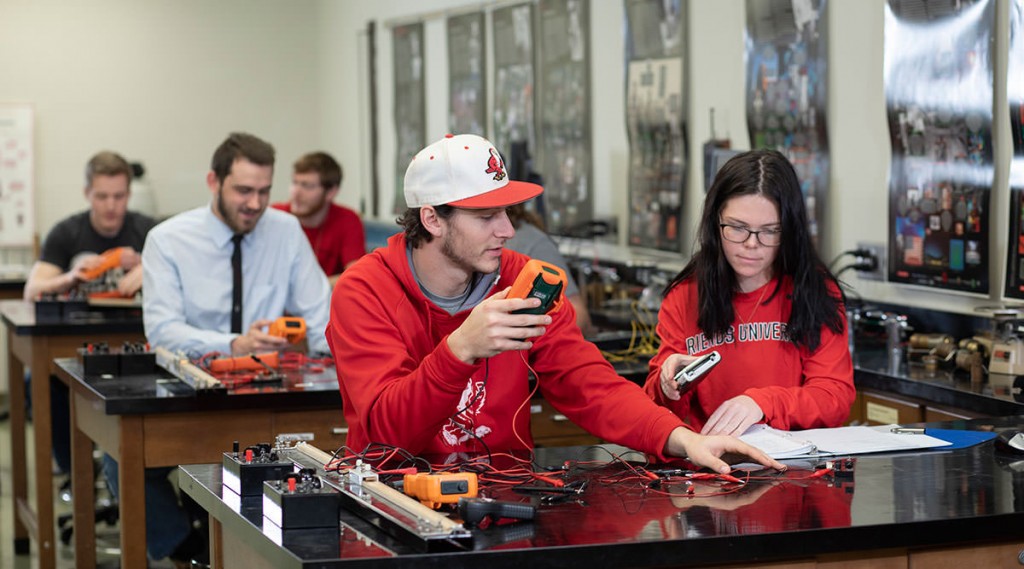
Innovation Fund Provided Momentum
A significant challenge for any struggling university is that there is little money that can be directed to new ideas or potential growth opportunities, even to small projects that provide a positive morale boost. Early in Dr. Carey’s tenure, a donor stepped up to provide a six-figure Innovation and Outcome (I&O) Fund designed to spur on new ideas, provide incentives in enrollment management, and assist student-faculty research and projects. I&O funded a number of new initiatives and programs at the university – some with more success than others. However, the biggest boost from this fund was the building of a culture of innovation which fought against a culture of scarcity mindset. When administrators consistently have to say “no” due to losses and financial challenges, it shuts down good ideas and revitalization strategies and discourages future advancement. Throughout the turnaround, Friends University moved quickly and “took some fliers” in developing new programs, majors, and ideas aimed to increase the number of students, and promote excellence in education. In summary, financially challenged organizations struggle to support new ideas or innovation. A fund, outside of the operating budget, to encourage revenue growth was critical to success.
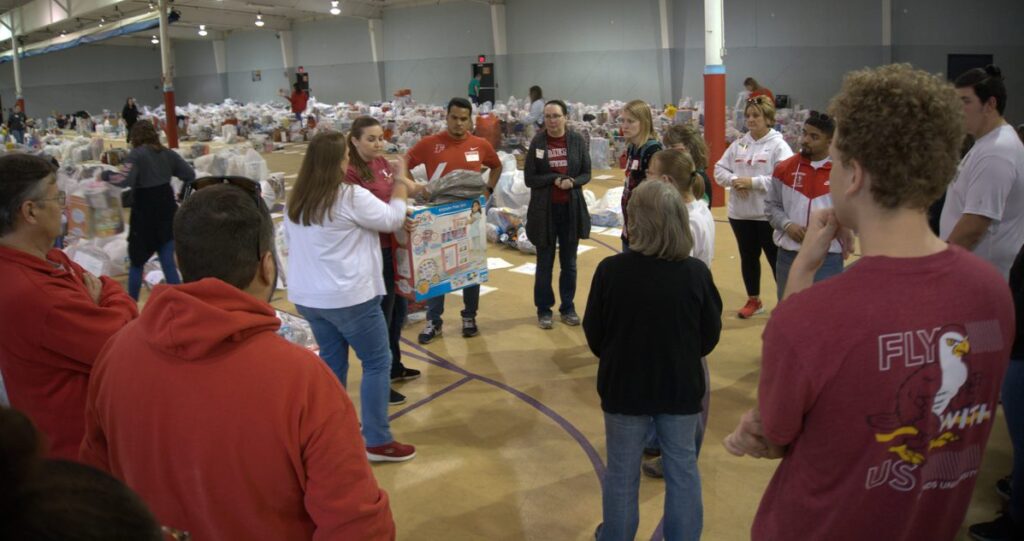
The Power of We
No one person can orchestrate a turnaround of a large institution on their own. It takes buy-in and collaboration from a team of leaders to power the financial and cultural success of an organization. At Friends University, the revitalization effort required partnership from the President, Board, Cabinet leaders, faculty and staff. Those interviewed mentioned that there were many difficult years during the turnaround; at times, it was hard to stay at Friends during these challenges. Others indicated that once Dr. Carey came and offered a way forward, they maintained a commitment to do their job with excellence and continued to serve students well. They realized that in order to help the institution thrive, they would have to be involved in recruiting students. Faculty members helped the turnaround by proposing new majors that would have market demand and understood when changes had to be made. Some noted these were the “hang in there” years, as many conversations with other faculty, staff members and students encouraged resilience through the uncertainty. It was also a season of ebb and flow. It was through the strength and persistence of those who resolved to do their job well that the institution survived. The President’s Cabinet also played a critical role, and each member was credited for impacting the positive growth.
In summary, it requires the resilience of many people to turn around a complex institution such as a university. Thankfully, Friends benefited from talented individuals, strong leadership and good-hearted faculty and staff who continued to serve students with excellence during difficult times.
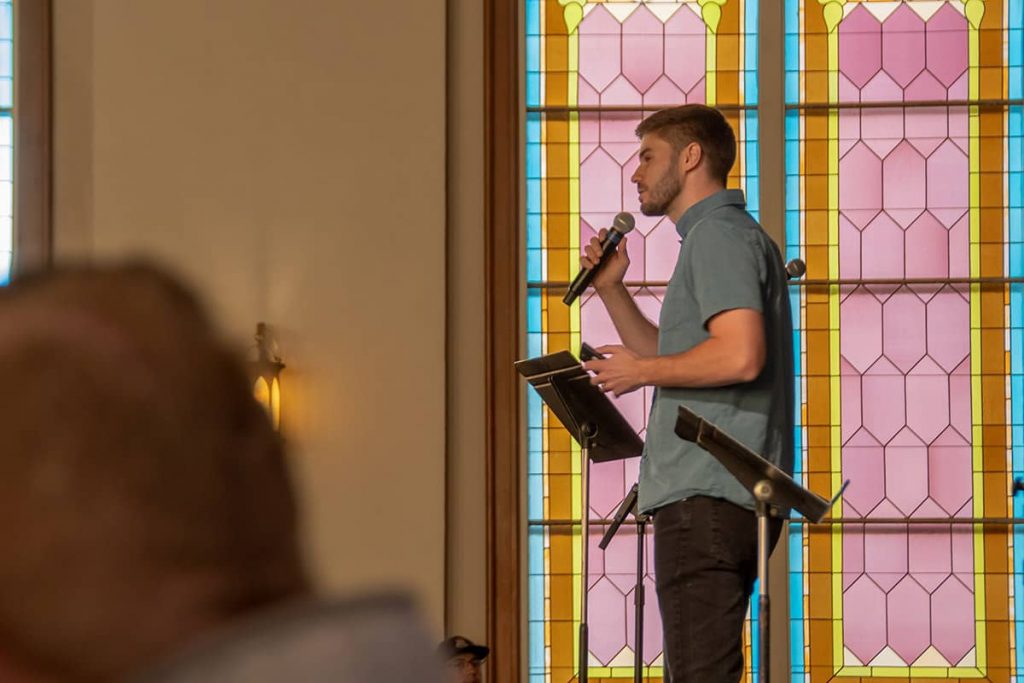
Supernatural Component
The supernatural component was another unique and undeniable theme of this particular turnaround effort at Friends University. Those interviewed for this study recognized that God’s faithfulness and intervention at key moments was a guiding, supernatural factor in the success of the revitalization of the institution. There was clear evidence of God’s favor toward Friends University’s re-commitment to Christ-centered education. Institutional leaders, local church congregations, faculty and staff members committed to pray for the university. Individuals would often “prayer walk” throughout the campus, Cabinet meetings included extended times of prayer, and a Board Member and spouse committed to organize an ongoing prayer initiative. Internal and external constituents noted a supernatural move of God happening at Friends University. Dr. Carey reflected on many times when God intervened in tough circumstances and answered prayer. The president established a personal prayer team of friends who consistently prayed for the university. In the study interviews, a Board Member stated that God provided financial (donor and other gifts) and people (key hires) resources at just the right time. Other comments recognized that God protected the university in challenging moments. The spiritual culture very evidently shifted at Friends.
In summary, a commitment to prayer and God’s faithfulness to Friends University had a big impact.

Personal Characteristics of the President Contributed to the Turnaround
Dr. Carey was often credited as the person who turned around the institution. Her visionary leadership and business-minded decision making provided the momentum for growth. She was the catalyst for the development of the Revitalization and Growth Plan and she set the path for the faculty and staff to follow. Several personal characteristics of the president were indicated in the interviews as important factors in Friends University’s turnaround story. These attributes include resiliency, an ability to face challenges head on, “smart business wise” in understanding the financial situation, transparency, forward-thinking, fundraising ability, clear communication, accessibility and genuine interest in the faculty, staff and students. Dr. Carey was not seen as one situated “in the ivory tower” but was noted as “relational and willing to listen.” She demonstrated a clear investment in the community, weekly attending student and faculty events on campus and events and donor meetings off campus. She was noted as highly committed to the success and future of Friends University. There was a sincere appreciation by those faculty interviewed for what Dr. Carey had done to reverse the downward trajectory of the university. Greater trust between the faculty and administration was attributed to the president’s relational and authentic style and clarity. In summary, a turnaround requires a determined yet relational leader with good communication skills.
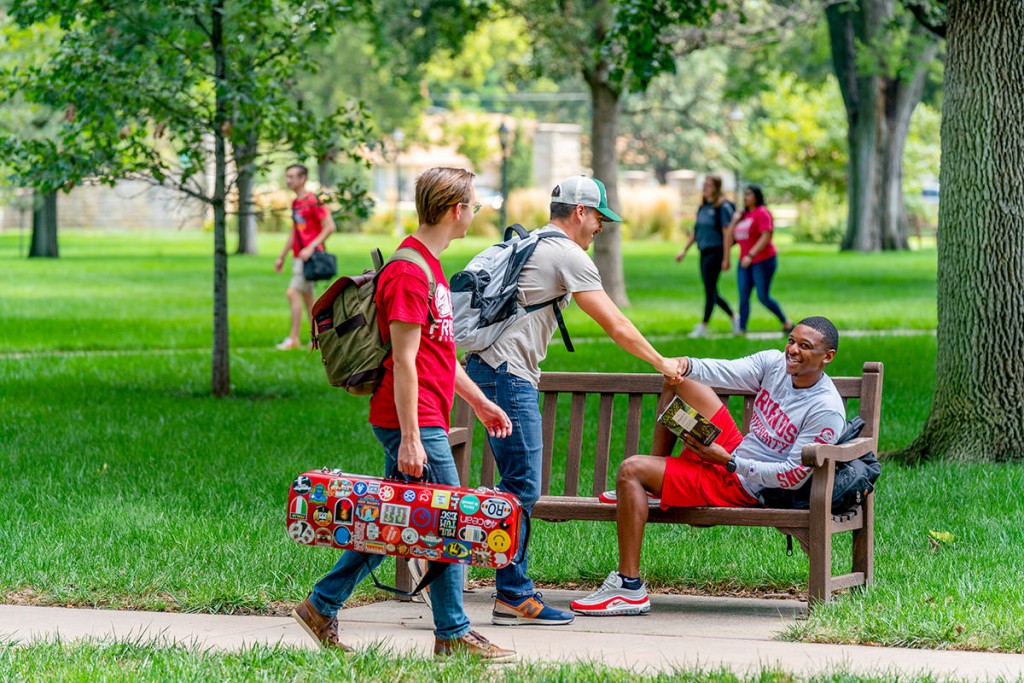
To What Extent is the Turnaround Consistent with Dr. Carey’s Dissertation Research
One of the goals of this study was to determine if any of the factors of the Friends University turnaround were consistent with Dr. Carey’s dissertation research regarding turnaround schools. Several aspects of the Friends story align with the dissertation research. In 2013, Dr. Carey used MacTaggert’s (2007a) study of 40 colleges and universities as a model. MacTaggert’s study examined private schools on the cusp of closure, bankruptcy, sanctions from the accrediting agencies, or decline in number of students. MacTaggert found that a turnaround typically required a leader from outside the institution with qualities that included a combination of decisiveness and collaboration to transform a distressed institution. Additionally, although fixing the financial issues was very important, it was only the first step toward building the reputation and academic strength necessary for the college to truly succeed. Finally, MacTaggert (2007b) noted that faculty members were a key piece in transforming an underperforming institution.
MacTaggert (2007a) created a turnaround circle, graphically identified in Figure 1, as a conceptual framework for understanding the college and university turnaround process. The first phase of any turnaround must be restoring financial stability (MacTaggert, 2007a). He stated that this phase was “always the necessary first step” for higher education institutions in significant financial trouble, and to do so quickly (MacTaggert, 2007a, p. 3). The second phase was the “marketing of the academic programs and a branding or rebranding and institutional image” (p. 3). The final stage was a shift in the culture that typically included a rejuvenation of academics. Schools that were successful in the third phase were “relentless in their commitment to focused improvement across the board” (MacTaggert, 2007a, p. 7).
Figure 1. MacTaggert’s turnaround circle
This turnaround circle was a significant aspect in Dr. Carey’s research, and it supported the findings from her previous research. The eight findings in the dissertation research were: (a) The board recruits a president ready for a significant challenge; (b) the president designs a compelling turnaround plan; (c) the president takes immediate action to correct the most pressing problems; (d) key constituencies provide support to the president; (e) the president develops the team and releases those who could not embrace the vision; (f) the president successfully raises donor funds; (g) the president communicates a clear direction for the future; and (h) the institution identifies and offers a distinctive aspect that brings growth in student enrollment and, thus, in revenue.
The Friends University turnaround story has 10 key elements that were essential to the turnaround progress. All of these elements are the same elements of the dissertation research with one big difference and a few additions. The boldness of the board of trustees to make a huge course correction to emphasize the Christian mission was undeniably remarkable and critical to the entire turnaround story. It was the first defining moment, and the first of many crucible moments along the journey of fidelity to mission. Therefore, the big difference in the Friends story is the special component of spiritual revitalization and reclaiming the Christian identity. Bringing a university back to its Christian roots with a greater faith emphasis is not often done. In fact, no other models of such a faith revitalization were found. While there may be other models to consider, none were identified in an online research review making this a remarkable aspect of the story. The steady, consistent, “evolutionary” actions of reinstating the Christian activities and hiring faithful people, as well as supernatural component of God’s hand on the University propelled the spiritual revitalization.
A component unique to Friends was a specific donor designated fund to spur on innovation and say “yes” to faculty research projects and other revenue generating activities. Also, the power of those who stayed at Friends, providing stability and a wonderful educational experience for students during difficult times, was an additional component to this study. Because of these dedicated individuals the university was able to rebound quickly.
While the Friends University study is not as robust a research project as Dr. Carey’s dissertation research, it demonstrates that the eight components found in Dr. Carey’s study are consistent and would likely be the necessary components for other turnaround situations. Institutions considering a turnaround would be mindful to consider these two relevant studies. Additionally, the Friends study confirms that the MacTaggart turnaround circle is relevant and matched the actions taken by Friends University. Friends needed to first right the ship financially and then added market demand programs, and ultimately added new rigorous programs such as mechanical engineering, conservation science, cyber security, and the first doctoral program.

Postscript from Dr. Amy Bragg Carey
This turnaround story is not only about a 9-year journey, but an ongoing journey that is not yet complete. There is more to come for Friends University. There will be more challenges. And it should be noted in the past 9 years not everything went well, mistakes were made, programs failed, some of the people who were hired were not the right fit for the institution, and budgets have been tight. When I arrived at Friends University, I believed I could make a difference and get the organization back on track, so I depended on God for His guiding hand. I also depended on a host of amazing supporters including my wonderful husband Bryan and family, dedicated prayer partners in Minnesota, and members of my Cabinet who probably didn’t get enough credit in this report. Ultimately, this is a story of God’s faithfulness to me and Friends University. Each and every year I recognize that for a season I am entrusted to steward this wonderful community of students, alumni, board, staff and faculty but ultimately, it’s in God’s hands and He is much wiser and capable than I am. It is a blessing to share our story, to achieve good financial performance, and experience other wonderful highlights, but it is most gratifying to know that we are making a difference in the spiritual life of our students. To God be the glory.
References:
- MacTaggert, T. (Ed.). (2007a). The three stages of college and university revitalization. In Academic turnarounds: Restoring vitality to challenged American colleges and universities (pp. 3-18). Westport, CT: Praeger Publishers.
- MacTaggert, T. (Ed.). (2007b). Critical success factors in restoring financial health. In Academic turnarounds: Restoring vitality to challenged American colleges and universities (pp. 19-30). Westport, CT: Praeger Publishers.
